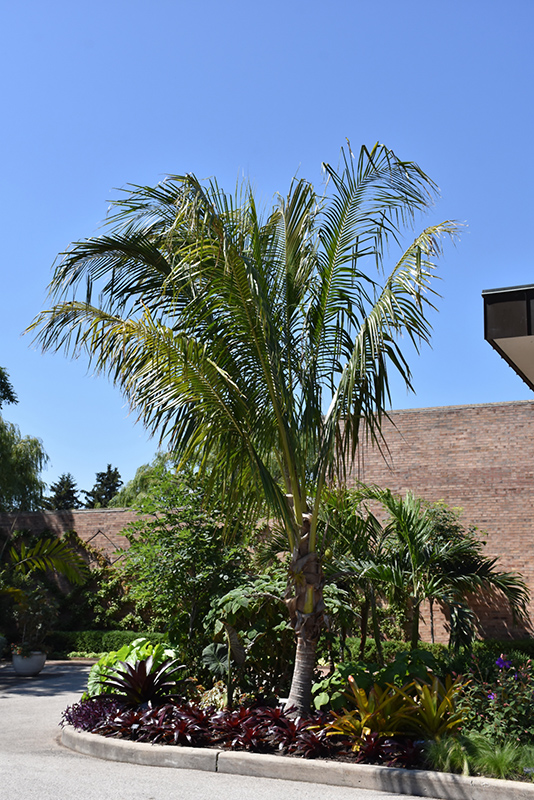PLANT FINDER
Height: 70 feet
Spread: 35 feet
Sunlight:
![]()
Hardiness Zone: 10b
Description:
A tall palm, native to the Western Pacific, but grown in frost free areas around the world; a single trunked variety crowned with downward arching green fronds; fragrant yellow flowers may appear year round, followed by edible fruits
Ornamental Features
Coconut Palm has clusters of fragrant yellow flowers hanging below the branches from mid to early winter. It has attractive dark green evergreen foliage. The large glossy narrow pinnately compound leaves are highly ornamental and remain dark green throughout the winter. The fruits are showy green drupes which fade to brown over time, which are carried in abundance from mid to early winter. The fruit can be messy if allowed to drop on the lawn or walkways, and may require occasional clean-up. The smooth gray bark is extremely showy and adds significant winter interest.
Landscape Attributes
Coconut Palm is an open evergreen tree with a strong central leader and a towering form, with a high canopy of foliage concentrated at the top of the plant. Its relatively fine texture sets it apart from other landscape plants with less refined foliage.
This is a high maintenance tree that will require regular care and upkeep, and should not require much pruning, except when necessary, such as to remove dieback. It is a good choice for attracting birds, bees and butterflies to your yard. Gardeners should be aware of the following characteristic(s) that may warrant special consideration;
- Insects
- Disease
Coconut Palm is recommended for the following landscape applications;
- Accent
- Shade
- Vertical Accent
Planting & Growing
Coconut Palm will grow to be about 70 feet tall at maturity, with a spread of 35 feet. It has a high canopy of foliage that sits well above the ground, and should not be planted underneath power lines. As it matures, the lower branches of this tree can be strategically removed to create a high enough canopy to support unobstructed human traffic underneath. It grows at a slow rate, and under ideal conditions can be expected to live for 60 years or more. This is a self-pollinating variety, so it doesn't require a second plant nearby to set fruit.
This tree should only be grown in full sunlight. It does best in average to evenly moist conditions, but will not tolerate standing water. It is not particular as to soil pH, but grows best in rich soils, and is able to handle environmental salt. It is somewhat tolerant of urban pollution. This species is not originally from North America..
A NetPS Plant Finder tool



